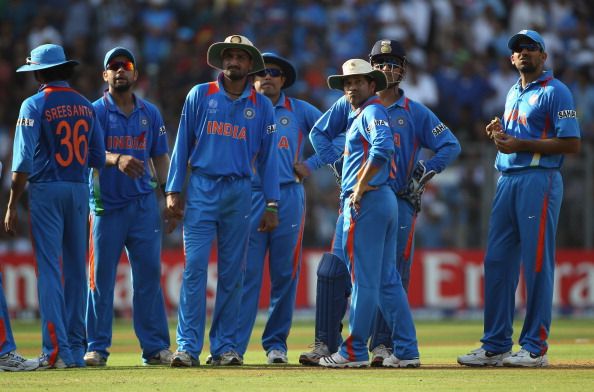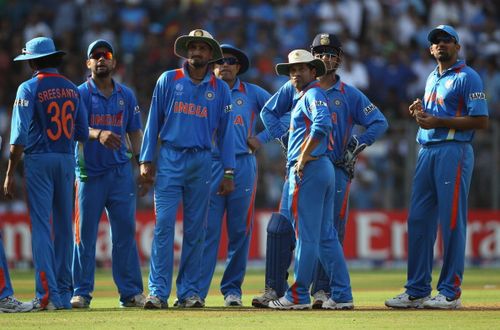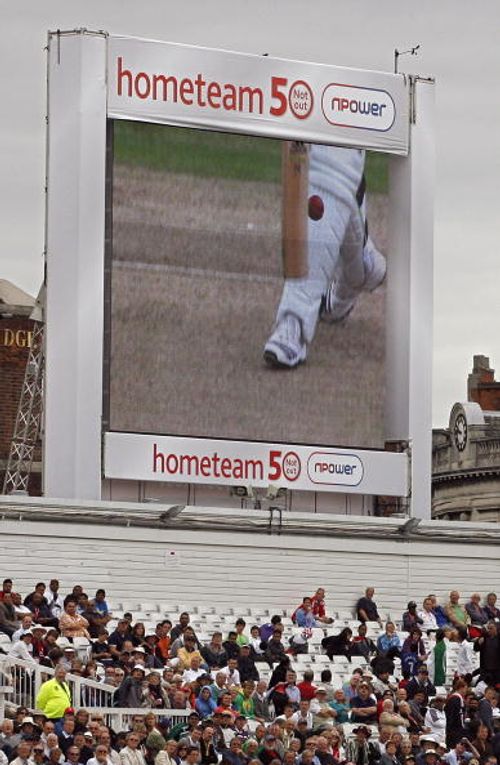
Indian cricket needs fresh approach - Begin with DRS

With 2012 done and dusted, many Indian cricket fans would be happy as it was a forgettable year for Indian cricket.
First, they got thrashed in the final two Tests of the series against Australia Down Under, completing the 4-0 whitewash for the hosts. Then came the ODI thrashing in the tri-series involving Sri Lanka and Australia which was followed by another debacle in the Asia Cup.
The IPL and the bilateral ODI series against Sri Lanka are annual affairs to earn revenue for the BCCI, so there’s nothing much to brag about there in terms of positives. After that came the Test series against a beleaguered New Zealand team which probably was the only series where India could regain some lost ground in Test cricket with a handsome 2-0 victory and the emergence of Pujara, India’s new number 3 batsman.
The Indian team’s performances in the T20 World Cups have also lost their charm since the inaugural edition of the tournament in 2007. Old and tired legs on the field, lack of sting in bowling and questionable team selections are some of the reasons for that. This proved to be the story in the 2012 edition too.
Then came the so called ‘Revenge series’ against England, who annihilated India in 2011 with a 4-0 score line in Tests at home. India seemed to have found some form with the first match in Ahmedabad. That victory not only made the Indians careless and complacent, but also suddenly the focus shifted from playing cricket on field to demanding doctored pitches to suit them.
What followed was a classic case of getting beaten at your own game. Cook’s men grew in confidence and stature while Dhoni’s men were still searching for answers after the Mumbai debacle. The story does not end there, they narrowly escaped with a 1-1 score against Pakistan in the T20s and also lost the first ODI in Chennai which could have been an embarrassment, but for Dhoni’s special knock.
2013 calls for a fresh and practical approach for resurrecting Indian cricket and regaining the lost ground. The first and the most sensible decision would be to opt for the DRS in all series, across all formats – ODIs, Tests and even T20s, both at home and away. There are many reasons behind the Indian team’s and the BCCI’s decision of not opting for it and taking a very stubborn stand.
If we dig back into the history of this, DRS was an experimental move by the ICC used in 2008 in an India-Sri Lanka Test series. However, India really messed up the reviews that they got in that series by challenging very straightforward decisions. On the other hand, Mahela Jayawardene, the Sri Lankan skipper, used all his reviews very wisely and got a few overturned.
In some of the decisions, the rub of the green did not go India’s way, however those are part and parcel of the game itself even without technology. Another example was the Ian Bell LBW incident in the World Cup 2011 game against England in Bengaluru. After that incident, MS Dhoni famously made a statement against the DRS about human intervention (read Billy Bowden) adding to adulteration of technology. Similarly, in the 2011 Test series against England, there were a couple of instances where the Hot Spot technology was not conclusive or fool proof to make a decision.
All said and done, these things are history now. The future is about adopting the DRS and embracing technology usage to maximum possible potential. There are many logical reasons to do so.

DRS helps in getting rid of the howlers
The first and foremost reason is that DRS would definitely lend a helping hand to India’s below par bowling line up that has struggled to pick up wickets even in helpful conditions in the past 2 years. Dhoni and the BCCI would have to analyse the videos of the past 2 series played against Pakistan and England. The Indian bowlers have been clobbered around the park most of the time and have been denied wickets on deserving deliveries on many occasions.
Alistair Cook was lucky more than once in Mumbai when he was rapped on the pads by a Harbhajan Singh delivery while sweeping. He swept almost everything that was pitched up on or around the off stump with a basic assumption that he would be struck outside the line of the stumps and would not be given out LBW. However, if the DRS was opted for by the teams, he may have changed his tactic as more often than not, the DRS helps the bowlers in overturning a close LBW call.
With DRS, the batsmen might be more conscious about playing the ball away from the pads or not having bat and pad too close together to avoid being out LBW or caught at bat-pad. Jonathan Trott survived an absolutely plumb LBW appeal against Ishant Sharma in Nagpur that definitely dented the confidence of the bowler for not getting a wicket even after bowling a good delivery.
Same was the case in the last ODI game against Pakistan in Chennai. Azhar Ali survived a very close LBW call with his first delivery against a lethal Bhuvneshwar Kumar in-swinger. Dhoni even jokingly signaled to Billy Bowden for a review after the appeal to show his frustration for not getting that wicket. Nasir Jamshed was caught at first slip off an inside edge by Virender Sehwag off Ashwin’s bowling but wasn’t given out. This reprieve helped him to get a hundred and win the game for Pakistan. And lastly, Younis Khan also survived an almost plumb LBW appeal in the middle of his innings.
All these instances point towards a very simple theory: the batsman would not be stupid enough to make the same mistake twice in an innings. It just takes one good delivery to get a good batsman out in every innings. By not opting for the DRS, Dhoni and the BCCI are making the life of the mediocre Indian bowling attack even tougher than usual. It is heartbreaking for a bowler to not get rewarded even after bowling a good delivery.
While it is understood that the benefit of doubt always goes to the batsmen in close calls, DRS reduces that gap of doubt and in turn, benefits the bowler more than the batsman on certain occasions. Likewise, it also enables the batsmen to get rid of the howlers that might go against them. Dhoni and company need to be shown some highlights of the such instances elsewhere in the world. The Australia vs South Africa series was a prime example of how the DRS can be a game-changer or even a match-saver.
If Du Plessis was given out wrongly in that marathon innings at Adelaide, the world would have been denied of some excellent batting to save a game, besides an emerging Test player.